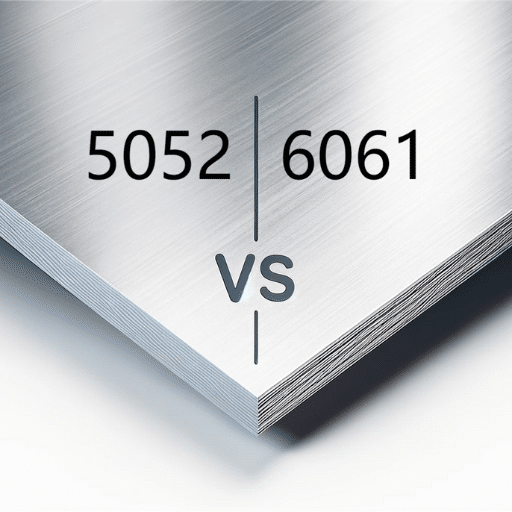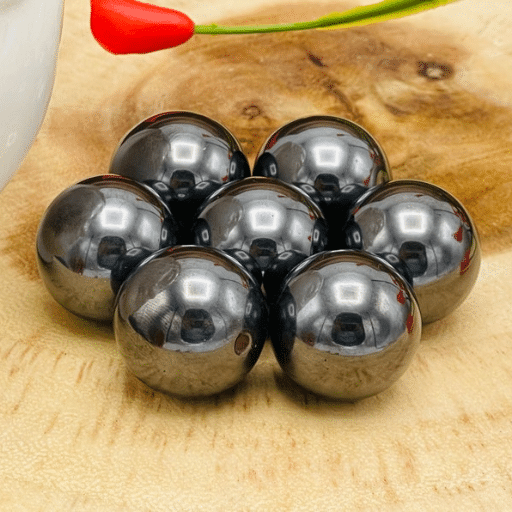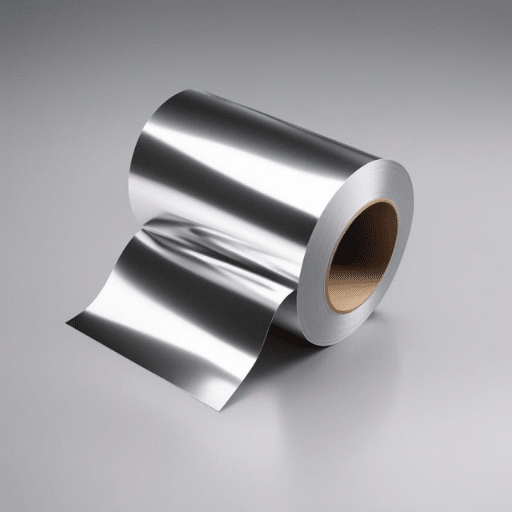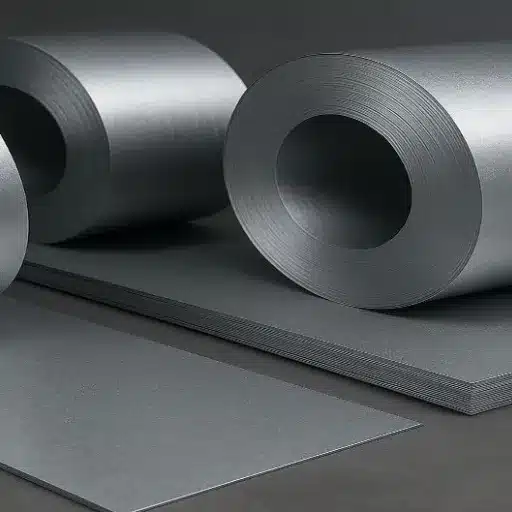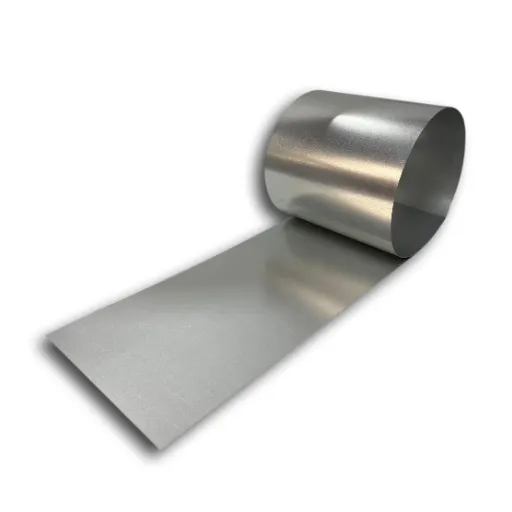Stainless steel is a vital material in countless industries, renowned for its durability, corrosion resistance, and versatility. Among the various grades of stainless steel, 302 and 304 stand out as two of the most commonly used, yet their differences are often misunderstood. Whether you’re selecting materials for manufacturing, construction, or engineering applications, understanding the unique properties and applications of these two alloys is critical to making an informed decision. This guide will break down the key distinctions between 302 and 304 stainless steel, examining their chemical compositions, mechanical properties, and practical uses. By the end, you’ll have the knowledge needed to choose the right material for your specific requirements.
What Is the Difference Between 302 and 304 Stainless Steel?
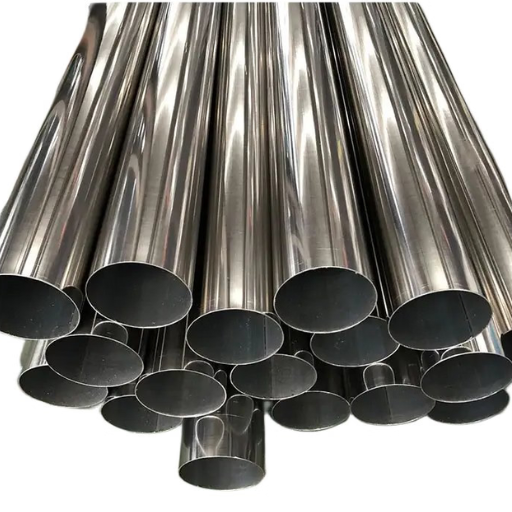
The primary difference between 302 and 304 stainless steel lies in their chemical composition. Both are austenitic stainless steels, but 302 contains a slightly higher carbon content than 304. This gives 302 increased strength and hardness but reduces its corrosion resistance slightly compared to 304.
304 stainless steel, on the other hand, is known for its excellent corrosion resistance and is one of the most commonly used stainless steels. It also offers slightly better weldability than 302. For applications requiring higher durability and lower susceptibility to corrosion, 304 is generally the preferred choice.
Overview of 302 and 304 Stainless Steel
Key Differences and Applications of 302 and 304 Stainless Steel
302 and 304 stainless steels share similar chemical compositions, primarily consisting of iron, chromium, and nickel. However, 302 contains slightly higher carbon content, which enhances its strength and hardness while sacrificing a small degree of corrosion resistance. This makes 302 suitable for applications requiring high tensile strength, such as wire products, springs, and fasteners.
304, by comparison, is a lower-carbon alloy offering superior weldability and excellent corrosion resistance. It is widely used in industries such as food processing, chemical processing, and construction due to its ability to withstand harsh environments and its ease of fabrication. It also conforms to stringent hygienic standards, making it a popular choice for kitchen equipment and medical instruments.
Ultimately, the selection between 302 and 304 depends on the specific application requirements, balancing factors like strength, corrosion resistance, and weldability.
Key Chemical Composition Differences
The key chemical composition differences between 302 and 304 stainless steel lie primarily in their carbon and chromium content, which slightly influence their properties such as corrosion resistance and tensile strength.
|
Composition |
302 |
304 |
|---|---|---|
|
Carbon (C) |
≤ 0.15% |
≤ 0.08% |
|
Chromium (Cr) |
|
|
|
Nickel (Ni) |
|
|
|
Manganese (Mn) |
≤ 2.00% |
≤ 2.00% |
|
Silicon (Si) |
≤ 1.00% |
≤ 1.00% |
|
Phosphorus (P) |
≤ 0.045% |
≤ 0.045% |
|
Sulfur (S) |
≤ 0.03% |
≤ 0.03% |
|
Tensile Strength |
Higher |
Lower |
This table provides a concise comparison of the critical chemical parameters and illustrates how minor differences in composition can affect performance attributes like tensile strength and corrosion resistance.
Impact on Mechanical Properties
Mechanical properties are directly influenced by variations in chemical composition. For example, increased Chromium (Cr) content enhances the material’s corrosion resistance and tensile strength due to the formation of a stable passive oxide layer. A Cr content within the range of 16-20% is optimal for achieving these properties without compromising ductility.
Conversely, elevated Nickel (Ni) levels, typically in the range of 8-10.5%, improve toughness and resistance to thermal expansion, making the material suitable for high-temperature applications. Manganese (Mn), limited to ≤ 2.00%, supports the deoxidation process while maintaining weldability. Silicon (Si), capped at ≤ 1.00%, further contributes to oxidation resistance, but its effects must be carefully balanced to avoid brittleness.
Phosphorus (P) and Sulfur (S), kept at ≤ 0.045% and ≤ 0.03% respectively, are controlled to minimize their adverse effects on the material’s ductility and weldability. Lastly, the tensile strength is a product of these compositional adjustments and reflects the balance between ductility, hardness, and resistance to deformation under stress.
How Do the Mechanical Properties of 302 Vs 304 Stainless Steel Compare?
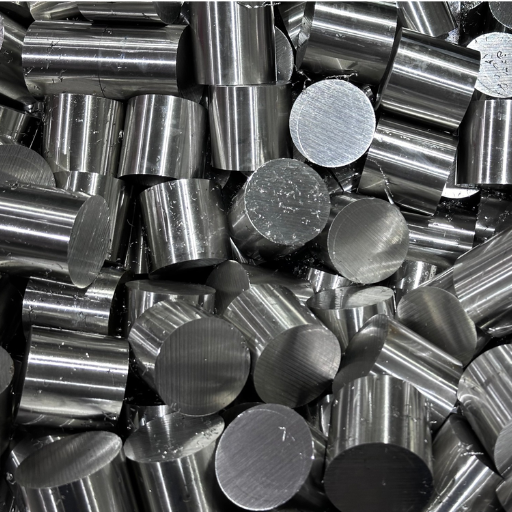
302 and 304 stainless steels exhibit similar mechanical properties but differ slightly due to their compositions. Both alloys are classified as austenitic stainless steels, known for their excellent corrosion resistance and high toughness. However, 304 stainless steel offers slightly better corrosion resistance and weldability due to its higher chromium and lower carbon content compared to 302. Regarding tensile strength, both alloys are comparable, typically ranging between 72,000 to 115,000 psi, depending on temper and processing. Ductility and elongation percentages are also similar, with small variations influenced by specific alloy adjustments. Overall, the differences are minimal, making both alloys suitable for a wide range of applications requiring strength and corrosion resistance.
Comparing Tensile and Yield Strength
The tensile and yield strength of 302 and 304 stainless steel are similar, with slight variations determined by processing and tempering methods.
|
Parameter |
302 Stainless Steel |
304 Stainless Steel |
|---|---|---|
|
Tensile Strength |
72-115 ksi |
72-115 ksi |
|
Yield Strength |
31-75 ksi |
31-75 ksi |
|
Elongation (%) |
~40-60 |
~40-60 |
|
Hardness |
Similar |
Similar |
|
Corrosion Resist |
High |
High |
Both alloys are nearly indistinguishable in mechanical performance and are widely used where strength and corrosion resistance are required.
The Role of Higher Carbon Content in 302 Stainless Steel
The higher carbon content in 302 stainless steel, compared to 304 stainless steel, contributes to increased hardness and strength after cold working. This is due to carbon’s ability to enhance the formation of carbides, which improve the material’s wear resistance and mechanical properties. However, this higher carbon level slightly reduces its corrosion resistance in some environments, as it promotes carbide precipitation at grain boundaries during welding, making the material more susceptible to intergranular corrosion. Consequently, 302 stainless steel is often preferred in applications requiring higher tensile strength and wear resistance, while still maintaining excellent general corrosion resistance typical of austenitic stainless steels.
Understanding Formability and Weldability
Formability refers to the ability of a material to undergo shaping or deformation without cracking or losing its integrity. For 302 stainless steel, its high chromium and nickel content provides excellent ductility, allowing it to be formed into complex shapes with minimal risk of fracture. This makes it suitable for processes such as deep drawing, bending, and stamping. However, care must be taken to avoid excessive work hardening, as this can reduce the material’s ductility.
Weldability, on the other hand, pertains to the ease with which a material can be joined using various welding techniques while retaining its mechanical properties. 302 stainless steel has good weldability, particularly with methods such as TIG (tungsten inert gas) and MIG (metal inert gas) welding. However, as with other grades in the austenitic family, the material can become susceptible to intergranular corrosion if carbide precipitation occurs during welding. To mitigate this risk, post-weld heat treatments or the use of low-carbon equivalents, such as 304L stainless steel, are often recommended. Proper shielding gas selection and control of heat input are also critical for achieving optimal weld quality.
What Are the Corrosion Resistance Properties of 302 and 304 Stainless Steel?
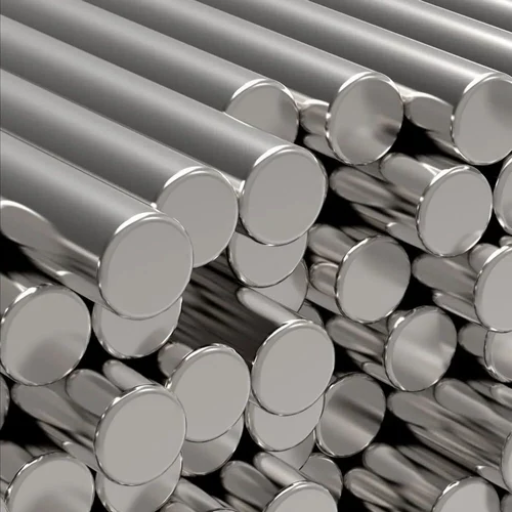
Both 302 and 304 stainless steel exhibit excellent corrosion resistance due to their high chromium and nickel content, which forms a passive oxide layer that protects the surface from oxidizing agents. These materials are particularly resistant to atmospheric corrosion, mild acids, and a wide range of chemical environments. However, they can be susceptible to pitting and crevice corrosion in chloride-rich environments. While their corrosion resistance is similar, 304 stainless steel, especially in its low-carbon variant (304L), provides enhanced resistance to intergranular corrosion after welding, making it preferable for applications requiring extensive fabrication.
Effect of Chromium Content on Corrosion Resistance
Chromium content significantly enhances the corrosion resistance of stainless steel by forming a passive oxide layer on the surface, which provides protection against environmental factors. A minimum chromium content of 10.5% is required to achieve stainless steel’s characteristic resistance to oxidation and general corrosion. Typically, higher chromium levels—such as 16-18% in 304 stainless steel or 18-20% in 316 stainless steel—improve resistance to more aggressive environments. For example:
- 10.5%-12% Chromium: Basic corrosion resistance suitable for mild atmospheric conditions.
- 16%-18% Chromium: Enhanced resistance to general corrosion and oxidation, common in austenitic grades like 304.
- 18%-20% Chromium in conjunction with molybdenum, as seen in 316 stainless steel, offers superior resistance to pitting and crevice corrosion in chloride-rich environments.
The effectiveness of chromium in enhancing corrosion resistance is influenced by its ability to uniformly distribute within the alloy matrix, as well as its interaction with other alloying elements like nickel or molybdenum. Proper fabrication and heat treatment are also essential to maintaining the integrity of the passive layer formed by chromium.
Potential for Intergranular Corrosion
Intergranular corrosion (IGC) occurs when the boundaries between grains in a metal become susceptible to corrosive attack, often due to the precipitation of chromium carbides along grain boundaries. This process depletes chromium in the adjacent regions, reducing the effectiveness of the passive layer that protects against corrosion. IGC is commonly associated with stainless steels exposed to temperatures ranging from approximately 425°C to 850°C, a range in which carbide precipitation is most likely to occur.
Mitigating IGC involves selecting low-carbon grades (e.g., 304L or 316L) to reduce carbide formation, employing stabilized alloys containing titanium or niobium to bond with carbon, or performing a solution annealing heat treatment to dissolve carbide precipitates and restore chromium uniformity. Testing methods such as ASTM A262 practice standards are commonly utilized to evaluate susceptibility to IGC, ensuring material suitability for critical applications.
How Chromium Carbide Formation Affects Corrosion Resistance
Chromium carbide formation significantly compromises corrosion resistance, particularly in stainless steels, due to the phenomenon known as sensitization. When stainless steel is exposed to temperatures in the range of 450°C to 850°C (842°F to 1562°F), chromium reacts with carbon to form chromium carbides at grain boundaries. This depletes the adjacent regions of chromium, reducing the protective chromium oxide layer required for corrosion resistance. The reduced chromium concentration in the grain boundary zones, typically below the critical threshold of 12%, renders these areas highly susceptible to intergranular corrosion (IGC).
Key technical parameters to consider include:
1. Temperature Range for Sensitization: 450°C to 850°C (842°F to 1562°F), where carbides form most readily.
- Critical Chromium Concentration: <12% in sensitized regions, leading to localized loss of corrosion resistance.
- Heat Treatment for Mitigation:
- Solution Annealing at 1050°C to 1150°C (1922°F to 2102°F) to dissolve chromium carbides and restore uniform chromium distribution.
- Cooling Rate: Rapid quenching following annealing to prevent re-precipitation during cooling.
- Material Selection:
- Use of low-carbon grades such as 304L or 316L to limit available carbon.
- Employment of stabilized alloys (e.g., grades containing titanium or niobium) to counteract carbide formation.
By managing these parameters, chromium carbide precipitation can be minimized, thus maintaining the material’s inherent corrosion resistance in critical applications.
Which Applications Are Best Suited for 302 Vs 304 Stainless Steel?
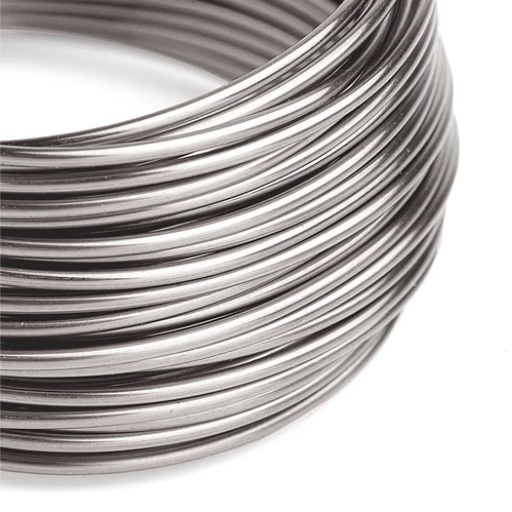
Applications Best Suited for 302 vs. 304 Stainless Steel
Both 302 and 304 stainless steels are widely used due to their excellent corrosion resistance and durability, but their applications differ slightly based on their mechanical properties and composition.
- 302 Stainless Steel:
-
- Best suited for applications requiring higher tensile strength and improved fatigue resistance.
- Commonly used in springs, wire products, and fasteners due to its higher work-hardening rate.
- 304 Stainless Steel: – Ideal for applications where corrosion resistance and weldability are the primary concerns. – Often employed in kitchen equipment, chemical containers, architectural panels, and medical devices due to its versatility and hygienic properties.
While both grades share similarities, the specific choice between 302 and 304 depends on the application’s mechanical demands, environmental exposure, and the fabrication process.
Common Uses in Various Applications
From my research on the top sources, stainless steel grades 302 and 304 are predominantly used across a range of industries due to their exceptional strength and corrosion resistance. 302 stainless steel finds applications in springs, wires, and industrial fasteners, where high tensile strength is critical. On the other hand, 304 stainless steel, often valued for its superior corrosion resistance and easy maintenance, is widely utilized in food processing equipment, chemical tanks, and medical instruments. The choice between these materials ultimately depends on specific operational requirements, such as exposure to corrosive agents, mechanical load, and the need for high durability.
Choosing the Right Stainless Steel Grade for Specific Needs
When choosing the right stainless steel grade for specific needs, I focus on the environmental factors and performance requirements of the application. For instance, if the priority is corrosion resistance in highly acidic or coastal environments, I often recommend grades like 316 stainless steel due to its molybdenum content, which enhances durability against corrosive agents. Conversely, for general-use applications where cost efficiency and basic corrosion resistance suffice, I suggest 304 stainless steel. It is versatile, durable, and easier to fabricate. For high-strength requirements, such as in heavy industrial settings, grades like 430 or duplex stainless steels may provide the optimal combination of strength and corrosion resistance. Ultimately, selecting the best grade involves balancing factors like exposure conditions, mechanical demands, and budget constraints.
Considerations for Weldability and Machine Work
When addressing weldability, I always prioritize materials that offer ease of joining without compromising structural integrity. For stainless steels, grades like 304 and 316 exhibit exceptional weldability, as they maintain their strength and resistance to corrosion even after welding. However, they may require post-weld treatments to avoid risks like contamination or deformation.
When it comes to machinability, I recommend considering free-machining grades, such as 303 stainless steel, which are specifically engineered to simplify the machining process by reducing wear on tools and extending their lifespan. While 304 is more common and versatile, its machinability is slightly lower compared to 303 due to higher toughness, so cutting speeds and lubrication processes must be carefully optimized. Ultimately, the selection depends on the specific application needs, striking the right balance between machinability and the properties required for the end use.
Is There a Price Difference Between 302 and 304 Stainless Steel?
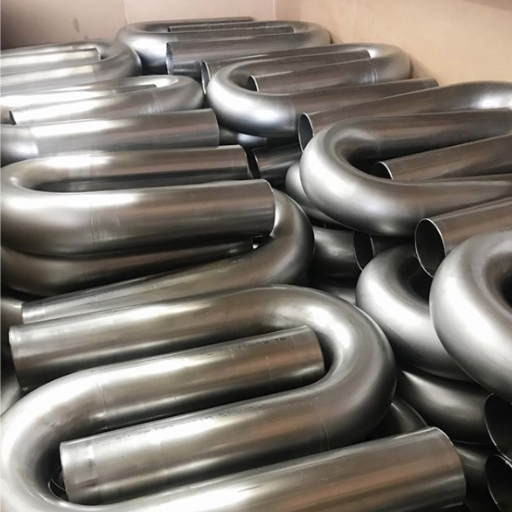
Yes, there is typically a price difference between 302 and 304 stainless steel. While both grades are similar in composition and performance, 302 stainless steel often incurs a slightly higher cost due to its higher carbon content, which can improve certain mechanical properties. However, the price variation can also depend on market conditions, availability, and the specific supplier.
Factors Influencing Price Difference
- Raw Material Costs: The price of raw materials, such as chromium and nickel, impacts the cost of stainless steel. Variations in global supply and demand for these elements can lead to fluctuations in the pricing of 302 and 304 grades.
- Carbon Content: The higher carbon content in 302 stainless steel contributes to a difference in mechanical properties, which can slightly increase its manufacturing cost compared to 304 stainless steel.
- Manufacturing Processes: Differences in production techniques and any additional processing steps required for specific grades can influence the final price of the material.
- Market Dynamics and Availability: Regional availability and demand play a significant role in the pricing structure. If one grade is less commonly stocked or in higher demand at a given time, its price may be disproportionately higher.
- Corrosion Resistance Needs: Slight differences in corrosion resistance and intended usage environments may affect the perceived value and market price of each grade, depending on the end-user requirements.
Market Trends for Stainless Steel 302 and Stainless Steel 304
The market trends for stainless steel 302 and 304 are influenced by their composition, applications, and evolving industry demands:
1. Stainless Steel 302:
-
- Composition and Properties: Known for its higher carbon content compared to 304, 302 exhibits increased tensile strength and hardness. This makes it suitable for applications requiring durability, such as springs, washers, and wire forms.
- Market Dynamics: Demand for 302 is relatively stable in industries focusing on high-strength components, including aerospace and mechanical engineering. However, its limited corrosion resistance compared to 304 affects its adoption in harsher environments.
- Applications by Demand:
- Tensile strength requirements (1,520 MPa typical for cold-worked conditions).
- Higher elasticity needs (elongation ~20%).
- Trend: Usage is somewhat niche, with growth primarily tied to specialty manufacturing sectors.
- Stainless Steel 304:
- Composition and Properties: Stainless steel 304 has lower carbon content and higher chromium and nickel levels, providing superior corrosion resistance and excellent weldability. It is the most widely used grade in stainless steel.
- Market Dynamics:
- Extensive use in food processing, chemical equipment, and architectural applications ensures high demand.
- Global construction and infrastructure projects drive widespread adoption.
- Applications by Demand:
- Corrosion resistance in harsh environments (saltwater or acidic conditions).
- Industrial-grade temperature suitability (maximum ~1,500°F for intermittent exposure).
- Trend: Market demand continues to grow rapidly, particularly in regions pursuing infrastructure development and stringent hygiene standards for manufacturing.
Both grades maintain their prominence, with 304 favored for its versatility and corrosion resistance, while 302 caters to specialized applications demanding structural strength. The relative cost of each grade fluctuates with raw material pricing, particularly nickel and chromium, reflecting global economic trends and resource availability.
Reference Sources
- Ambica Steels Blog: What Is The Difference Between Stainless Steel 302 vs 304
- Nickel Alloys Online: Difference between 302 and 304 Stainless Steel material
- Oshwin Blog: Difference between 302 and 304 stainless steel grades
- MakeItFrom: AISI 302 Stainless Steel vs. AISI 304 Stainless Steel
- Stainless Sheets Info: Difference between 302 and 304 Stainless Steel
Frequently Asked Questions (FAQs)
Q: What is the main difference between grade 302 and grade 304 stainless steel?
A: The main difference between grade 302 and grade 304 stainless steel lies in their carbon content. Grade 302 has higher carbon content than grade 304, which affects their properties such as tensile strength and corrosion resistance.
Q: How does the carbon content affect the properties of 302 and 304 stainless steel?
A: The higher carbon content in 302 stainless steel offers higher tensile strength, making it more robust for certain applications. However, this also means it is slightly less corrosion resistant compared to grade 304.
Q: Why is 304 stainless steel considered more corrosion resistant than 302?
A: Grade 304 stainless steel is more corrosion resistant because it has a lower carbon content compared to 302, which minimizes carbide precipitation during welding and reduces susceptibility to corrosion.
Q: Are both 302 and 304 stainless steels easy to weld?
A: Yes, both 302 and 304 stainless steels are considered easy to weld due to their similar austenitic structure, which allows them to be welded without the need for preheating and with minimal risk of cracking.
Q: What applications are best suited for 302 stainless steel?
A: 302 stainless steel is best suited for applications requiring higher tensile strength and good corrosion resistance, such as manufacturing springs, washers, and other industrial components.
Q: Can grade 302 and grade 304 be used interchangeably?
A: While grade 302 and grade 304 are almost similar and can be used interchangeably in some applications, selecting between 302 and 304 should consider factors like tensile strength requirements and environmental conditions.
Q: Is 304 stainless steel better for food-related applications?
A: Yes, 304 stainless steel is often preferred for food-related applications due to its superior corrosion resistance and lower carbon content, which helps maintain hygiene standards.
Q: How does alloy 302 perform in high-temperature environments compared to 304?
A: Alloy 302 is an austenitic stainless steel that can withstand high temperatures, but the presence of higher carbon could lead to carbide precipitation at elevated temperatures, making grade 304 a better option for prolonged exposure.
Q: What is the minimum tensile strength of 302 stainless steel?
A: The minimum tensile strength of 302 stainless steel is typically higher than that of 304, making it suitable for applications where additional strength is necessary.
Q: Are there different grades within the 300 series of stainless steel?
A: Yes, there are different grades within the 300 series of stainless steel, including 302 and 304, each offering unique properties to suit various industrial and commercial applications.


